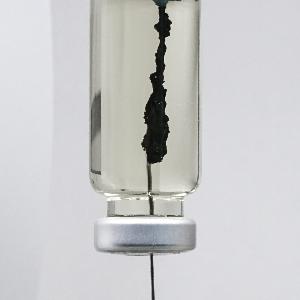2025-04-30 マックス・プランク研究所(MPG)

A miniature black smoker
The syringe injects the sulfidic fluid into the iron-rich solution in the vial. This precipitates a black iron-sulfide membrane. | © Vanessa Helmbrecht
<関連情報>
- https://www.lmu.de/en/newsroom/news-overview/news/geobiology-iron-sulfur-heat-and-first-life.html
- https://www.nature.com/articles/s41559-025-02676-w
地球初期の地球化学シミュレーションにより、水素に依存した原始代謝が促進される Simulated early Earth geochemistry fuels a hydrogen-dependent primordial metabolism
Vanessa Helmbrecht,Robert Reichelt,Dina Grohmann & William D. Orsi
Nature Ecology Evolution Published:30 April 2025
DOI:https://doi.org/10.1038/s41559-025-02676-w
Abstract
Molecular hydrogen is the electron donor for the ancient exergonic reductive acetyl-coenzyme A pathway (acetyl-CoA pathway), which is used by hydrogenotrophic methanogenic archaea. How the presence of iron-sulfides influenced the acetyl-CoA pathway under primordial early Earth geochemistry is still poorly understood. Here we show that the iron-sulfides mackinawite (FeS) and greigite (Fe3S4), which formed in chemical garden experiments simulating geochemical conditions of the early Archaean eon (4.0–3.6 billion years ago), produce abiotic H2 in sufficient quantities to support hydrogenotrophic growth of the hyperthermophilic methanogen Methanocaldococcus jannaschii. Abiotic H2 from iron-sulfide formation promoted CO2 fixation and methanogenesis and induced overexpression of genes encoding the acetyl-CoA pathway. We demonstrate that H2 from iron-sulfide precipitation under simulated early Earth hydrothermal geochemistry fuels a H2-dependent primordial metabolism.



